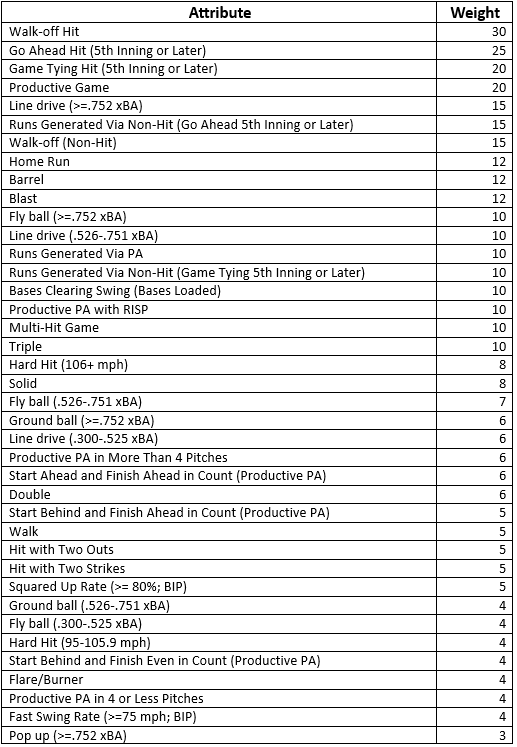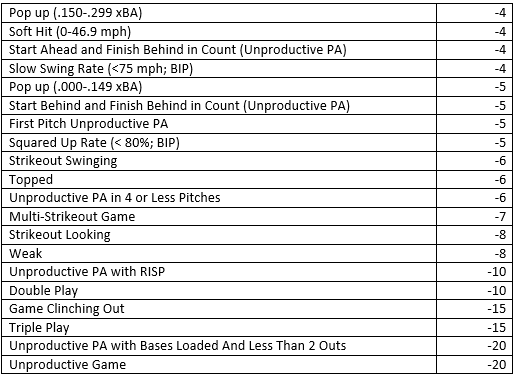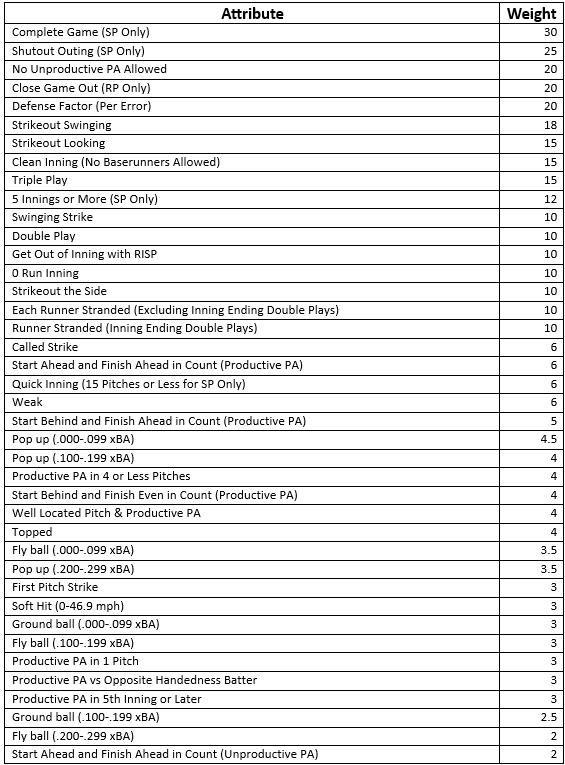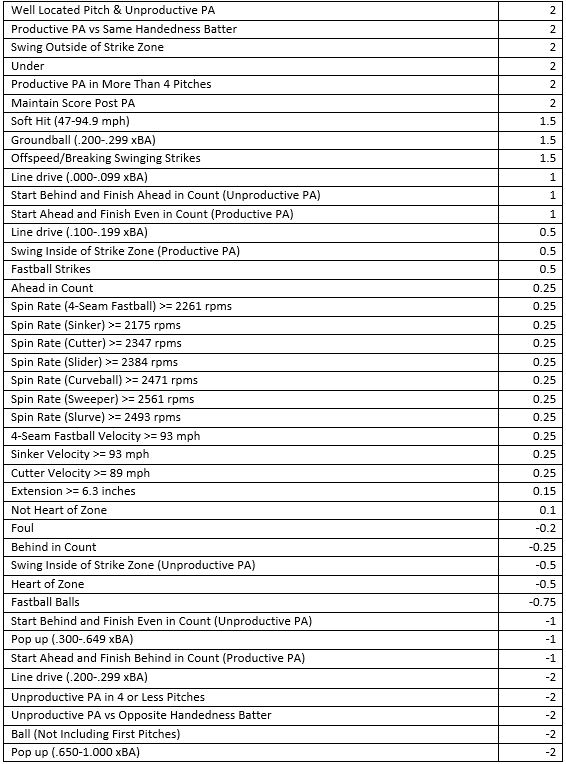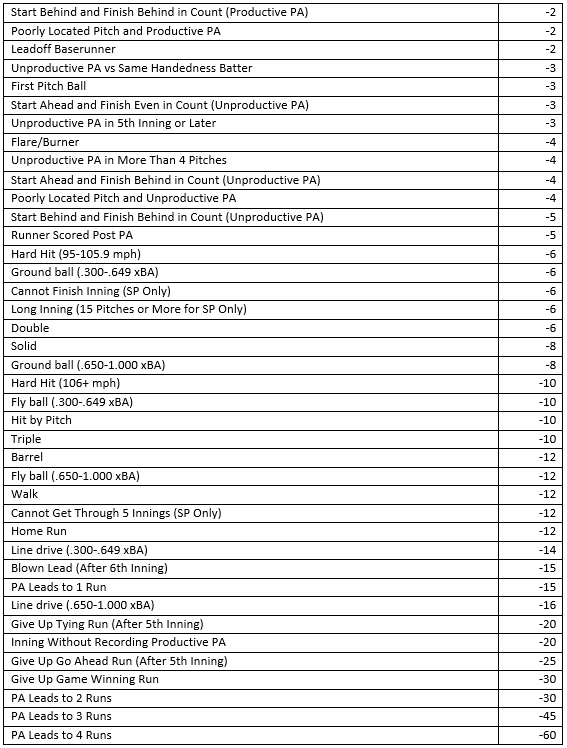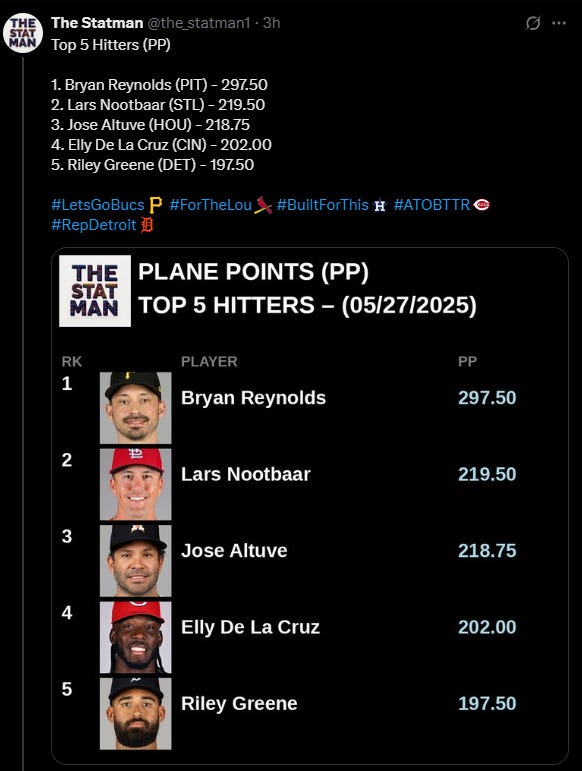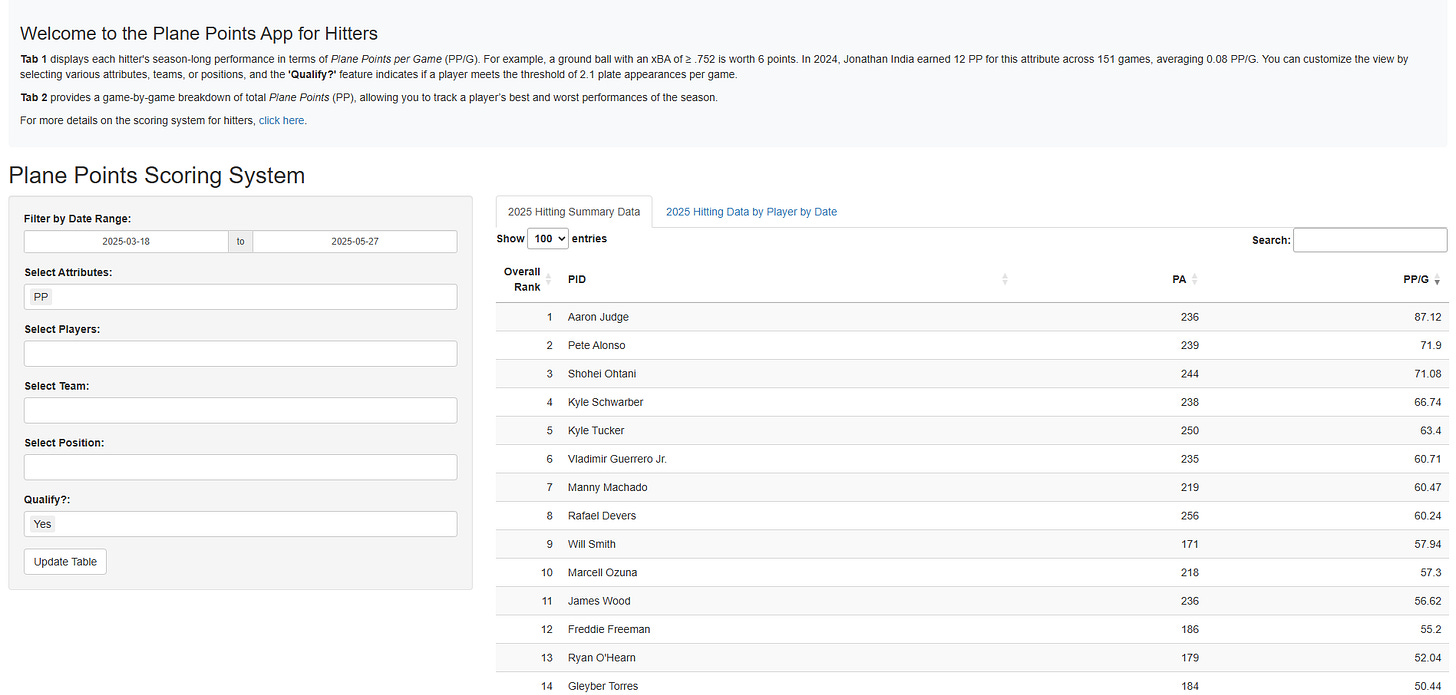The Ultimate Guide to Plane Points
Your go-to, regularly updated resource for all attributes, weights, leaderboards, and more...
This pinned post serves as your ongoing reference for the Plane Points scoring system. Below you will find a detailed list of all hitting and pitching attributes, along with their current weights. These attributes and weights are regularly reviewed and updated to ensure the scoring system remains precise and relevant. Additionally, when Baseball Savant, our primary data source, introduces new metrics that enhance the system, they will be promptly incorporated. For example, attack angle is the latest addition.
In this post, I will also explain what Plane Points is, including how it works, why it was created, and what makes it different from other baseball metrics. To help you better understand the specific components of the system, you will also find links to articles that break down each of the attributes used in Plane Points. These articles explain how each attribute is defined, why it matters, and how it is weighted. These articles are a part of a series of posts I recently started called “Inside the Cockpit.”
You will also find two links that lead to separate leaderboards for hitters and pitchers. These dynamic tools provide up-to-date rankings, allowing you to explore player performance across different date ranges, sort by specific attributes, track individual player progress over time, and much more.
What is Plane Points?
Plane Points is a scoring system I created in 2024 to evaluate and rank MLB players using a combination of traditional and advanced metrics. While widely used stats like Wins Above Replacement (WAR), Weighted Runs Created Plus (wRC+), and On-base Plus Slugging (OPS) are extremely useful for player evaluation, I believe there is still more to uncover when it comes to truly understanding performance. That belief is what led me to design this system. Plane Points aims to capture that missing layer.
Many of the attributes included in Plane Points overlap with existing metrics; however, I have also created and incorporated several unique attributes that are not reflected in more conventional statistics. The heart of this system lies in measuring productivity in ways that often go unnoticed, such as a hitter battling back from a tough count or a pitcher efficiently slicing through a lineup. These additions allow for a more nuanced and complete picture of a player's overall value.
With Baseball Savant as my primary data source, I update Plane Points daily. This scoring system not only provides a clearer view of performance over time but also helps identify trends, breakout stars, and under-the-radar contributors. Whether you are a fan, analyst, or fantasy baseball player, Plane Points offers a fresh and constantly evolving way to understand who the best players in the league are.
Hitters and starting pitchers are evaluated on a Plane Points per game basis, while relief pitchers are measured on a per batter faced basis.
Plane Points continues to grow. Beginning with the 2025 season, all data accumulated through this scoring system is now being used as the foundation for optimizing MLB team lineups. You can read more about that here. Throughout the 2025 season, I will be posting daily optimal lineups for the Marlins and their opponent each day on my X.
Attributes & Weights
As you browse through these lists of attributes, you’ll notice many that are familiar if you’re used to common baseball stats. You’ll also come across several attributes that are either not currently included in any catch-all metrics or were created specifically for this system. The weights assigned to each attribute are based on how important I believe they are to a player’s overall production. These weights have been tested and refined multiple times to ensure the scoring system and its results are as meaningful and accurate as possible.
Hitters
As it currently stands, hitters are evaluated across 100 different attributes, each contributing positively or negatively to their total Plane Points. The tables below are sorted in descending order by weight, highlighting the most impactful components of the scoring system. These attributes are tracked across multiple levels, including the pitch level, at-bat level, and game level, to provide a comprehensive evaluation of performance.
Pitchers
For pitchers, many of the same principles apply, but they are evaluated across 121 different attributes. In addition, certain attributes apply exclusively to starting pitchers or relief pitchers. Some events or outcomes may reward or penalize starters differently than relievers, ensuring that each role is assessed fairly based on its unique demands.
Inside the Cockpit: A Closer Look at Plane Points
Below you will find links to a series of articles I created to take a deeper look at the attributes listed above. Each article breaks down a specific attribute of the scoring system to help you better understand how Plane Points works. As new articles are published, they will be added to this running list.
Active Leaderboards
Understanding how the scoring system works is valuable, but it becomes even more powerful when you can see the results in action. Using R programming, I developed two interactive applications, one for hitters and one for pitchers, that showcase all of the data generated by the Plane Points system. These leaderboards allow you to explore player performance on a specific day, over custom date ranges, by team, and much more. You can also dive into each attribute that contributes to a player's score. Clicking the links below will take you directly to the applications, where you will find instructions to help you get the most out of your experience. These will be updated regularly.
You can also find daily leaderboards and other tidbits relating to Plane Points on my X.
For additional context when viewing the leaderboard, the league average among qualifying hitters is 19.90 Plane Points per game.
For additional context when viewing the leaderboard, the league average among qualifying starting pitchers is 373.02 Plane Points per game. For relief pitchers, it is 21.68 Plane Points per batter faced.



